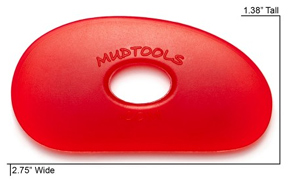If one wall is good, 2 are better?
Last week I posted about how to make a chip n’dip. This week I’m taking that lesson one step further with making a double wall vessel. In my opinion, the point of creating a double wall piece isn’t for functionality or practicality, but rather for design and artistic expression.
Creating a double wall mug or bowl won’t make your piece structurally better, help you throw faster or make it easier to trim. Frankly, its the opposite. You’ll have a higher chance of cracks, it will take longer to throw and it lends itself to more ornamentation.
So the question is…Why do it? I have 2 answers/reasons.
First, to test your skill/challenge yourself. Now this means that you’re confident in making all the basic and intermediary shapes you can and you’re bored with them. If you’re like me and can knock out a dozen mugs without breaking a sweat, this might be a good challenge for you.
Second, you love to carve and decorate. If you’ve got a heavy fine arts background, particularly in sculpture, this way of working might just help align everything. I will tell you that I was never more professionally satisfied working in production than when I was able to utilize all my art skills on a piece. For me that meant, throwing, trimming, decorating sculpturaly and drawing/painting on the piece. So if you love carving, this is a great process to learn.
Before, I get into how to do this, I am posting some examples of work (none of which are mine) that might help inspire you on what you’d like to do.
So for quick refresher I am going to repost on of my chip n’ dip videos so you know how I started.
OK, so giving directions on this is both simple and complex. Its simple in the fact that all you are really doing is pulling 2 walls. Rather self explanatory by the name of piece, I am aware. That being said, if you have mastered pulling clean and consistent walls their is no special hidden knowledge to this.
There in lies the complexity, mastering pulling clean and consistent walls. You need to have spent the hours refining your skills, steadying your hands and remaining cool, calm and collected at the wheel. You need to know that being gentle with clay will get you more of the results you want than aggression and squeezing will.
Now going back to simple directions and how to’s: You want to pull the inside wall first. After that pull the outside wall second.
The big question is, do you want to connect the walls. Most people do, but there is no rule that says you must. If you scroll back up and look at the piece in the top left corner you’ll notice that the walls aren’t connected.
If you do want to connect the walls than its a careful game of slowly pushing them together. I recommend one of my favorite tools that I often talk about, the red mudtools rib.

Its wonderfully flexible and will help you not just join the walls together, but also smooth out the connection once joined.
Now the great thing about joining the walls together is that you trap air, which means you can manipulate the walls more because there is air pressure inside. So once you master connecting the walls don’t be afraid to fuck around with them.
If I’ve never told you to not be emotionally attached to your work…I’ve told you now.
My last piece of advice on trying this is to take your time. Never rush anything on wheel. You might not get it on your first or even second attempt. That being said, if you keep the speed of your wheel an easy medium 30 miles and hour, don’t get to physical with the clay and slowly work the walls together, you should have more success than failure.
When it comes to storing them, wrap the shit out of them and let them dry slowly. You have a high risk of having them crack because of the nature of the piece. So slow once again is your friend.
Pottery forces you to be patient and to be a great potter you must be patient and not rush the process.
OK, next week I’ll be going into closed form pieces.
Till then, get into the studio and make something.
Questions on the technique, email me at sparanoarts@gmail.com, like what I’m doing feel free to shop my Etsy store
Comments
4 Responses to “If one wall is good, 2 are better?”Trackbacks
Check out what others are saying...-
[…] writing last weeks blog post on double wall vessels and how to close them, it occurred to me that I should also show how to make a single wall closed […]
LikeLike
-
[…] last I spoke about double wall vessels, it was primarily about how to make them and suggestions on what you can do with them. Suggestions […]
LikeLike
-
[…] This style of lid is a little more complicated to throw, but not by much and is essentially a double wall vessel. When taken to a further extreme, this style of lid can also become a butter […]
LikeLike





There is an artist in Barcelona , Spain who also does double-walled crystalline glazed pottery: Jörg Baumöller. He’s on Facebook.
LikeLike